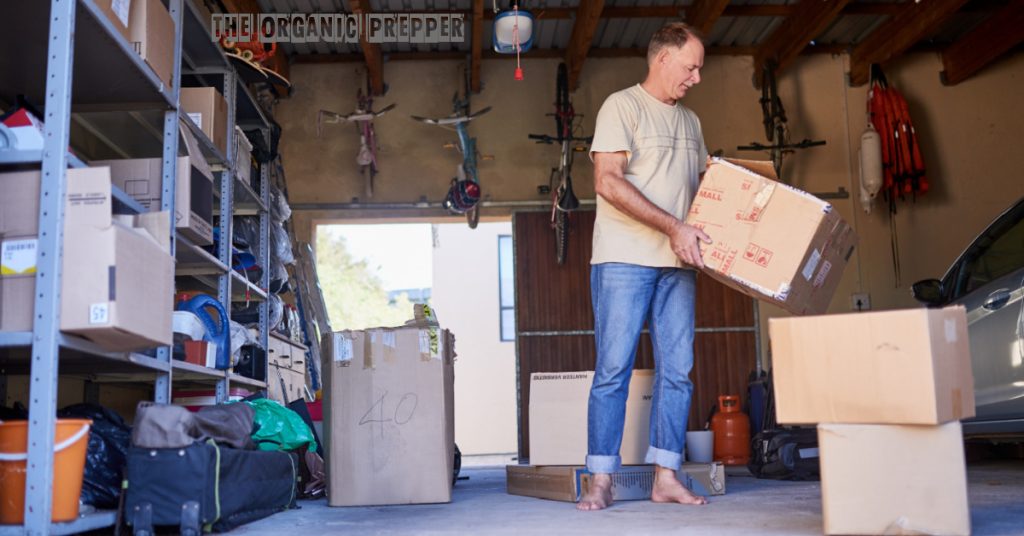by Daisy Luther, The Organic Prepper:

I want to talk about what’s in your closet.
The things that are tucked away, all but forgotten.
The stuff you bought on sale and forgot about. The things you only used once and then stashed away. The items at the back of the pantry, the clutter in the junk drawer, and the stash in the garage.
You probably have all sorts of preps already.
TRUTH LIVES on at https://sgtreport.tv/
So before you go out and buy a bunch of stuff, you need to take a deep dive into your home and unearth your treasures. Nearly everyone has odds and ends on hand that, when organized, can form the backbone of a prepper stockpile.
If the last few chapters left you feeling overwhelmed and maybe a little bit defeated, I think you’ll feel way better after this one.
Let’s see what you’ve got!
Figure out what you’ve already got
I like to have my lists (the ones we made in the last chapter) close at hand and go treasure-hunting for preps. The way I generally get started is by attacking different storage areas in my house. One by one, I explore my closets, my junk drawers, my medicine cabinets, and my storage areas. I have an area in my home that I use as Command Central, where the preps I found will go. Currently, Command Central is my dining table.
I have a process that I use for this:
- I gather up cleaning supplies, a box for preps, a marker, a notebook and pen, and my lists.
- I pull everything out of the area I’m working on. For this example, let’s say we’re doing the hall closet.
- I lay my hands on every single item in that closet, going through any baskets and bins.
- If something is on one of my prepper lists, I put it in a box. You may want more than one box – for example, house and hygiene, power outage, pets.
- I wipe out the cabinets and shelves before I put things back in.
- I return the day-to-day use items, such as towels, bed linens, current cleaning supplies that are in use, the open container of kitty kibble, the nail file, etc., to their places.
- Everything that is a prep goes into its respective box and goes into my Command Central,
Now I’m left with a clean, organized closet and a stack of random preps I didn’t even know I had. Win-win!
Rinse and repeat
Go through every area of your house and do this, saving your kitchen for last.
Here are some areas to tackle:
Drawers with random contents
- Attics
- Basements
- Closets
- Baskets (I have baskets full of miscellany all over the place – maybe that’s just me?)
- Shelves
- Under the sinks in the kitchen and bathroom
- Medicine cabinets
- Garage
- Laundry room
- Sheds
Any place stuff might be stashed, go through it using the process above. Command Central is probably getting pretty full by now!
How to do a pantry inventory
Next is your pantry. To clarify, when I say pantry, I’m not just talking about the little closet off of your kitchen (if you have one – I don’t!) I mean wherever you store your food.
This is generally the biggest inventory you’ll do in most households.
#1 Pull out every bit of food in the house that doesn’t belong in the refrigerator.
Clear your counters and table and empty out your food storage areas completely. Now, while they’re empty, is a perfect time to clean out your storage areas. I like to clean areas that are going to store food with the most natural products possible. You can use vinegar and water or a non-toxic cleaning product. I’m a big fan of the Method brand or Mrs. Meyer’s brand. (Mrs. Meyer’s is expensive but wonderful.) Scrub everything down and then leave it open to air out while you’re organizing your stuff.
You won’t want to pull all of your freezer items out where they’ll thaw. Simply pull them out for long enough that you can write down what’s in the freezer and in what amounts.
#2 Sort it into categories
Now that you can see everything, it’s time to sort it out. Put similar items together. You might categorize something like this:
- Baking supplies
- Pasta
- Rice
- Boxed food like flavored pasta or rice dishes
- Canned meat like tuna or chicken
- Canned fruit
- Canned vegetables
- Crackers
- Cereal
- Jars with sauce (marinara, salsa, cheese)
- Cans of soup, stew, and chili
- Mixes (pancake, brownie, cake, etc.)
- Packets (gravy, stirfry seasoning, taco seasoning, etc.)
- Dried fruit
- Treats like cookies, chips, etc. (Items with little nutritional value)
- Granola bars
#3 Make a detailed list of what you have
 Now that you have everything out, are you surprised by anything? Do you have more or less than you thought you might?
Now that you have everything out, are you surprised by anything? Do you have more or less than you thought you might?
It’s time to put it all down in black and white. This probably won’t be your permanent pantry list, it’s just a starting point.
When you write down your quantities, do it in the way that makes the most sense to you. Some people like to use the weight, for example:
6 pounds of pasta
Others, myself included, like to quantify it in realistic serving sizes. By realistic, I mean a size your family members would actually consume at a meal, not the 1-ounce servings touted on the package.
24 servings of pasta
Quantifying by serving size doesn’t work with things like baking soda or flour – for those items, weight measurements will be the most accurate.
#4 Put things back in an organized fashion.
When you put things away, it’s good to keep them organized. I prefer to keep like items with like items. For example, I have a shelf with crackers, flour, rice, and pasta, keeping all my grains together. I have another shelf for protein items, one for fruits and vegetables, and a shelf for snacks. You get the idea.
Read More @ TheOrganicPrepper.ca



